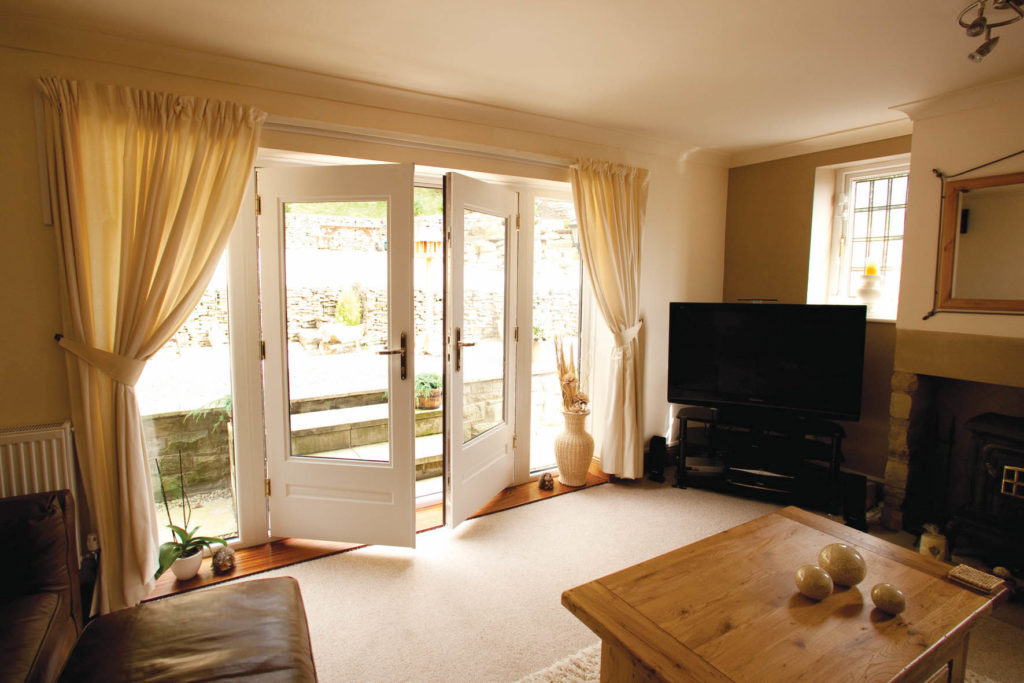Are your Windows & Doors ready for Winter?
1st November 2023 Comments
1st November 2023 Comments

Since you’re reading this, chances are that you’re in a position where the winter season is a cause for concern for your home. To assess whether or not your home can keep you warm in the winter we suggest conducting a quick inspection on your doors and windows.
Typically there are two main culprits when wear and tear from the weather starts to set in: Doors and windows. Naturally, because they’re literal entrances, they’re the most vulnerable to allowing draughts and cold spots to occur during the winter.
Windows in particular have multiple points of vulnerability when it comes to weather damage. The frame, the glazing, and the sealant used to bond the glass into place, all of which serve as points of degradation to build up.

Certain materials used to build window frames are more susceptible to changes in weather than others. For example:
Wooden Frames: Timber frames absorb moisture during wet seasons. Without proper maintenance, this often leads to cracks which allow draughts to build up over time.
Aluminium: This material is the least susceptible to weather degradation. However, it conducts heat very well, meaning it allows indoor warmth to escape the house easier than other materials.
uPVC: This material is the best for use when it comes to the wintertime. It doesn’t conduct heat very well meaning more heat stays in your home, it can’t absorb moisture so it won’t crack. However, in the summer, UV rays from the sun make it vulnerable to warps which is how it becomes less effective.
To start the assessment of your window’s weatherproofing capabilities, first, look into the structural integrity of your window frame. If you’re having difficulty knowing what to keep an eye out for, it’s always helpful to speak to a professional.
In some instances where the degradation isn’t visible on the frame itself, you’ll find that the areas around it are more affected by the weather. One of the most common problems we’ve found our clients tackling is damp build-up around their windows.
Typically this happens most during the winter when frost and ice build up on the home exterior and as it gets settled on your window, it’s in the perfect position to seep into your home once it melts back into water. Telltale signs of this happening in your home would be discolouration, cracks, or peels in the paint surrounding your window.
Windows have multiple pieces of hardware that work together to ensure a thermal barrier between your home and the elements. Examples of these include:
Locks: A good lock will be the difference between an airtight barrier and a draught. Assessing its structural integrity can be tricky depending on what lock you have. Universally though, if you notice stiffness on the rotation of your key, or if you find that the hooks/shoot bolts don’t attach your window firmly into place, it might be a sign that it’s time for some maintenance. Try locking your window and see if you can move the window at all, even if it’s a slight wiggle, it means that the window isn’t airtight.
Hinges and Rails: Do you feel any difficulty when opening your windows? Or perhaps one part of the opening motion feels looser than the rest, it could be a sign that your window is misaligned from the rest of the unit as a result of wear and tear on its hinges or rail.
Window Rubber Seal/ Gasket: A window gasket is installed in your window frame to prevent draughts and water from entering your home. Other than condensation which is the clearest sign that it’s time for an upgrade or some maintenance, cracks in the rubber form after the many changes in temperature over time.

Even though a door has fewer points of vulnerability than a window, it covers a much bigger surface area than a window. Meaning that they have the potential to allow even more of the outside weather to seep into your home. areas you may want to consider assessing include:
Where doors cyclically expand and contract in size due to temperature and humidity, you’ll often find structural mishaps when you open and close your door. If you find that your door is starting to stick, you should check its hinges and whether or not they need to be tightened, or replaced altogether.
The annual cycle of harsh winters and rain, followed by hot sunshine in the summer often leads to changes in the appearance of your door. If you find that the weather has faded or discoloured the door, cracked the wood, or uPVC on it, it could be a sign that draughts will soon follow.
First of all, speak to a professional to get advice on how to weatherproof your home. If you already know what you’re looking for, feel free to use our free quoting engine to see if it fits your budget.